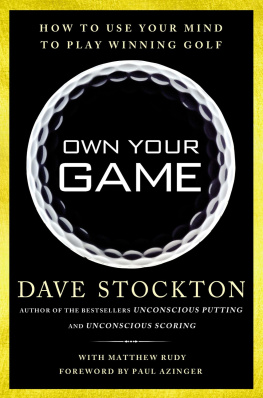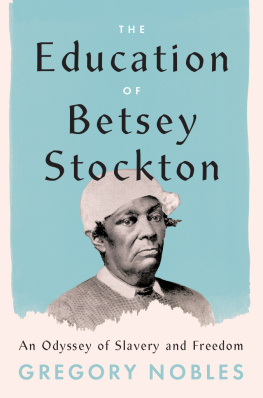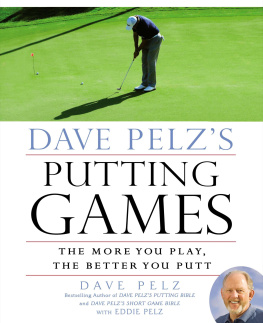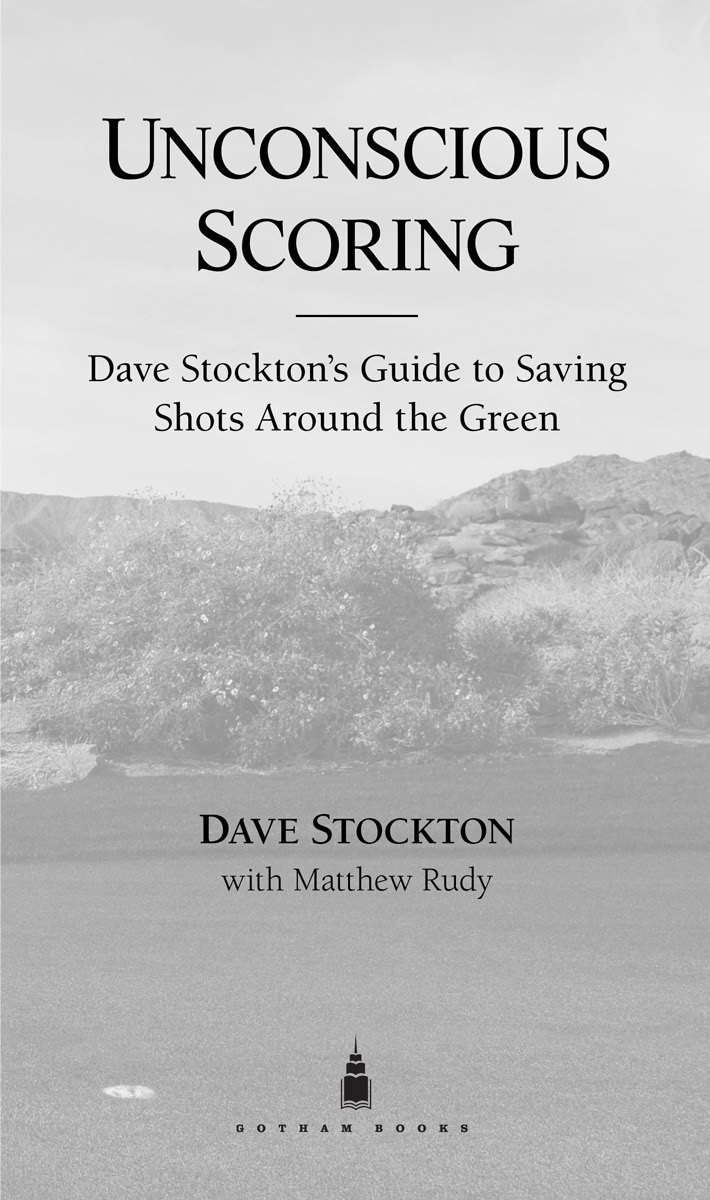Also by Dave Stockton
UNCONSCIOUS PUTTING
GOTHAM BOOKS
Published by Penguin Group (USA) Inc.
375 Hudson Street, New York, New York 10014, U.S.A.
Penguin Group (Canada), 90 Eglinton Avenue East, Suite 700, Toronto, Ontario M4P 2Y3, Canada (a division of Pearson Penguin Canada Inc.); Penguin Books Ltd, 80 Strand, London WC2R 0RL, England; Penguin Ireland, 25 St Stephens Green, Dublin 2, Ireland (a division of Penguin Books Ltd); Penguin Group (Australia), 250 Camberwell Road, Camberwell, Victoria 3124, Australia (a division of Pearson Australia Group Pty Ltd); Penguin Books India Pvt Ltd, 11 Community Centre, Panchsheel Park, New Delhi110 017, India; Penguin Group (NZ), 67 Apollo Drive, Rosedale, Auckland 0632, New Zealand (a division of Pearson New Zealand Ltd); Penguin Books (South Africa) (Pty) Ltd, 24 Sturdee Avenue, Rosebank, Johannesburg 2196, South Africa
Penguin Books Ltd, Registered Offices: 80 Strand, London WC2R 0RL, England
Published by Gotham Books, a member of Penguin Group (USA) Inc.
First printing, September 2012
Copyright 2012 by Dave Stockton
All rights reserved. No part of this book may be reproduced, scanned, or distributed in any printed or electronic form without permission. Please do not participate in or encourage piracy of copyrighted materials in violation of the authors rights. Purchase only authorized editions.
Gotham Books and the skyscraper logo are trademarks of Penguin Group (USA) Inc.
LIBRARY OF CONGRESS CATALOGING-IN-PUBLICATION DATA
Stockton, Dave.
Unconscious scoring : Dave Stocktons guide to saving shots around the green / Dave Stockton with Matthew Rudy.
p. cm.
ISBN 978-1-101-59086-7
1. GolfTraining. I. Rudy, Matthew. II. Title.
GV979.T68S86 2012
796.352'3dc23 2012018756
Unless otherwise noted, all photos are courtesy of J. D. Cuban
While the author has made every effort to provide accurate telephone numbers, Internet addresses, and other contact information at the time of publication, neither the publisher nor the author assumes any responsibility for errors, or for changes that occur after publication. Further, the publisher does not have any control over and does not assume any responsibility for author or third-party websites or their content.
CONTENTS
Chapters
FOREWORD
By Rory McIlroy
Back in the middle of 2010, my caddie, J. P. Fitzgerald, suggested that I get together with Dave Stockton to work on my putting. At the time, I was happy to do my own thing, so I left it alone for a while. But after the tough finish at the Masters in 2011, I felt like there were some things I needed to address. I read some things Dave had to say about putting and the short game, and I knew that he was very into feel and keeping things natural with your stroke.
I figured that was a great place to start. My game is based on feel, and I didnt think my putting matched the rest of it. It seemed like it would be a good fit.
Dave and I got together at the event in Charlotte, and the first thing we did was sit down and talk for half an hour. If youve read Daves last book, Unconscious Putting, you know what we did first. He asked me to write my signature on a piece of paper, and then he asked me to do it much slower, as if I was tracing it. Then he asked me which way I thought it would be easier to puttin a natural, subconscious way or a controlled, conscious way. That really hit me, and showed me that my putting needed to be in-line with the rest of my gamebased on instinct and feel. It took me fifteen minutes, max, to get it, and weve been working on many of the same things since. I pick my target, pick the spot on my line, let it go, and roll the ball over my spot, trying to get the back of my left hand to go toward the hole. It was incredibly freeing to have such a simple routine to follow. It uncluttered my mind, and gave me something I could count on, whether Im on the first green on Thursday morning or the seventy-second hole on Sunday afternoon.
Obviously, after the way this last year has turned out, were still going strong. If it wasnt for Dave, I dont know if I could have gone on this run, winning the U.S. Open and reaching the top of the world rankings. With Dave, its simple. Ive made more putts and shot lower scores, and you can see it in my results.
Most of our work comes on putting, but I can see how much sense Daves ideas work in the short game as well. I play a lot of practice rounds with 15- or 20-handicappers, and I see them standing over a chip shot or a bunker shot, just paralyzed. You wonder what theyre thinking about. Theyre overwhelmed by so many mechanical thoughts that they dont know where to start.
If that sounds familiar, take a step back and let Dave help you simplify your approach, improve your technique, and clear your mind. To me, nobody has more authority on the subject of putting and short game. Dave is a multiple major championship winner and a Ryder Cup captain, and these lessons mean more coming from someone who has been through it himself as a player. He knew that he had to hit better short-game shots and make more putts than the other guys to win tournaments, and he did it. You can also see from the first day how positive he is, and how much he really cares. He takes pride in the results his students post, whether they come at a major championship or a local amateur event.
He shows you how to be a better player and puts you in the right mind-set to go out and do it. I dont believe theres any more you could ask from a teacher.
Rory McIlroy
Holywood, Northern Ireland
April 30, 2012
PREFACE
By Lee Trevino
The first I ever really saw of Dave Stockton was in 1967, when he was just a couple of years out onto the PGA Tour. All the guys who won the Colonial National Invitation in Dallas got a vote for two non-exempt players to invite, and Dave was one of them. At the Masters or the U.S. Open, you won by driving the ball. At Colonial, you needed to be a magician around those small greens and all the bunkers. It was a perfect place for Dave, and he ended up winning the tournament that first year we invited him.
I always say that Daves father must have been a genius. Dave wasnt the longest hitter, or even the straightest, but I bet his dad knew that if Dave was ever going to make his living at this game, he was going to have to know how to play from 100 yards and in.
Thats something Im familiar with, because I came up the same way. I grew up playing a par-3 course with one club, and I had to learn how to hit a lot of different shots. I wasnt born with that talent with my wedges, but I earned it, and so did Dave. I got to be great with the wedge because I had to, and so did Dave. He and I proved that you dont have to be 6-foot-4 and hit it 320 yards to win. I put him right up there with the greatest short-game players Ive ever seenSeve Ballesteros, Hubert Green, Raymond Floyd. And hes obviously one of the greatest putters ever, right there with Ben Crenshaw and Jack Nicklaus. And those skills have never left him, like they have for some other players.
Where were different is that Dave knows whats behind it, and he can show you how to do it the same way every timeboth on the green and around it. Dave learned the game when you had one wedge to hit every short-game shot, and he knows how to explain the mechanics and feel to you. I did it a lot of different, crazy ways, and changed all the time. I knew what I was doing, but I didnt know so much about how to get you to play better.









